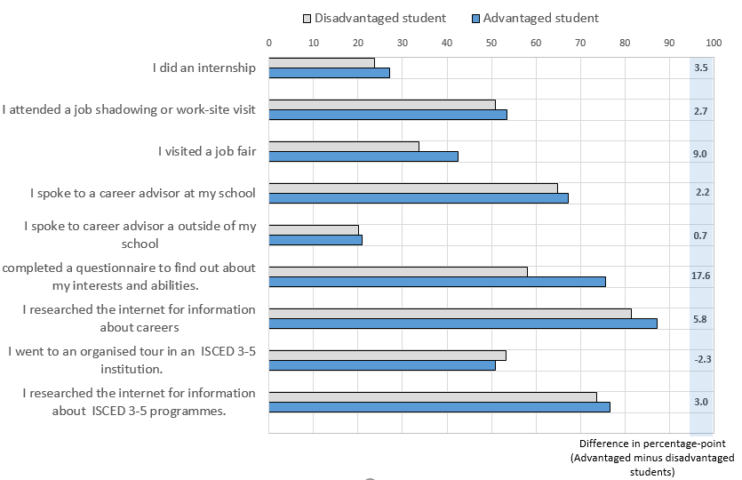Dr Anthony Mann, Senior Policy Analyst, Directorate for Education and Skills, OECD
I know from personal experience that youth unemployment is a wretched thing. In my early twenties growing up in the north of England I struggled to make progress within an unwelcoming labour market. Research studies show that I could have expected to be ‘scarred’ by the experience – which is to say, that my long-term employment prospects would have been impacted. It was certainly a difficult time, but I took some solace that many of my friends, even graduates like myself, were also struggling.
Thirty years later another global recession is threatening the employment prospects of a new generation of school, college and university leavers. In recessions, young people nearly always suffer more than older workers. After all, the first instinct of employers in response to falling demand is to halt recruitment and when they do hire they have their pick of experienced workers. In the competition for employment, young people know less about how to get a job, have fewer useful contacts and less work experience than older workers. They are at a structural disadvantage in the search for work and when times are hard, they struggle to compete.
In this tough environment, it is timely to reflect on what education institutions are doing to help give students confidence that they will be able to contend for available jobs. More than that, we want to see our young people finding their way towards jobs that are as good a possible fit for them personally. As the influential American psychologist, David Blustein reminds us
“Work has the potential to add a great deal of meaning and richness to our lives; at the same time, it has the capacity to wither our souls in a way that few other life activities can match.”
Data-driven guidance
In response to the oncoming employment crisis, the OECD is embarking on new work to help support young people through their transitions into employment. Drawing on national longitudinal datasets, which follow thousands of individuals from childhood to adulthood, and the 2018 wave of the OECD Programme for International Student Assessment (PISA2018), we are working to identify global indicators of teenage career-readiness for adult employment. We do this by exploring why it is that some young people are less likely to be NEET, to earn more and to be more satisfied in their careers than peers from similar backgrounds and with the same levels of academic qualifications. In such a way, we can identify factors that can be expected to make a difference to learners with a wide range of academic abilities. It is an approach that Education and Employers pioneered, evidencing adult wage premiums linked to participation in teenage, school-managed career talks and reviewing the English research literature in search of indicators of adult economic success.
In a new working paper, Career Ready? How schools can better prepare young people for working life in the era of Covid-19, we identify an initial set of indicators from mainly English-speaking countries associated with three career-related aspects of teenage lives. The paper is a follow up to Dream Jobs? Teenagers’ career aspirations and the future of work produced by the OECD in collaboration with Education and Employers and published in Davos on the 22nd January 2020 during the World Economic Forum.
Career Ready? finds that multiple studies show that better than anticipated adult employment prospects are linked to what young people thought about their potential futures in work, how they explored possible careers and what opportunities they had to experience workplaces whilst still in secondary school.
Indicators include attitudes related to career certainty, ambition and misalignment; career insight talks and involvement in career development activities; part-time working, volunteering and participation in internships or work experience placements. They will form the basis for continuing work over 2021 that will draw on a wider range of evidence sources. The work will conclude in the autumn with the creation of new tools for policy makers and practitioners designed to help assess student career readiness and the effectiveness of guidance interventions.
Stay in touch and get involved
During the next month, the OECD will be producing a series of new publications for practitioners and policy makers. We will also be looking for examples of practice and to hear from professionals around the world about where the work should go next. You can stay in touch by emailing me, Anthony Mann (Anthony.mann@oecd.org).
Addressing disadvantage
Collectively, the work is designed to provide confidence that students are actively engaging in their transitions: that they are demonstrating the critical thinking about the relationship between the classroom and the workplace that underpins a sense of student agency. This is particularly important for young people from the most disadvantaged backgrounds because they often have less access to sources of information and support at home and are at greater risk of poor transitions. Low achieving and socially disadvantaged students are in particular need of support from their schools. Career guidance has a fundamental role to play in tackling inequalities.
Unfortunately, data for UK from the PISA2018 survey shows that it is young people from the most disadvantaged quarter of students by socio-economic status who routinely have less access to career development activities than their most advantaged peers.

In the UK, on average 39% of all 15 year-olds in 2018 said that they had attended a job fair. Whilst this was the case for 43% of the most advantaged students, it applied to only 34% of their most disadvantaged peers. These young people are now aged 17 and 18. Some will have attempted to find employment already. Others will be making important decisions about what, where and how to continue their education. For all, schools which have provided their young people with ample opportunity to become ready for their careers should know that in these difficult times, they have provided their students with a meaningful advantage as they take first steps into the jobs market.
